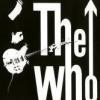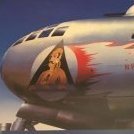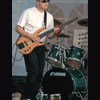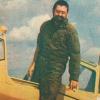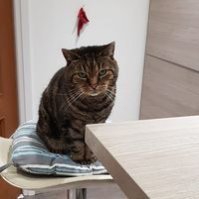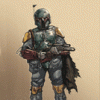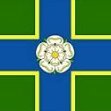Search the Community
Showing results for tags 'resin'.
-
So further to a request for more Royal Navy subjects its only fitting to start at the beginning. This will be a build of the Holland 1, a 1/72 resin model by Choroszy Modelbud. Clean up on isle 7 i hear you say and you wouldnt be wrong, there is a lot of cleaning up and prep of parts, as youd expect with a limited run resin kit. The mouldings are not bad, most bits look as they should. The biggest challenge will be the hull halves, as on the top edge a whopping 4mm needs to be trimmed off on each half! This is to allow the deck casing to sit properly on the cast guides. So heres some picks to start with, some parts have had the excess trimmed off, as ive made a tentative start. All the best Chris
- 11 replies
-
- 8
-

-
- 1/72
- Choroszy Modelbud
-
(and 1 more)
Tagged with:
-
A build from 2 years ago: Every time I have in my hands an SBS kit, I feel I am in modeling paradise. The exquisite casting, precision of detail, noble nature of the resin employed, subject appeal, treatment of the assembly sequence, instructions, accessories, the superb decals, even the sturdy box and careful packaging, ...everything is just wonderful. I said it before and will say it again: you all know I build all sorts of kits, from Frankenkits to good ones, from vacuform to resin, old to new, small to large, etc., plus my own scratchbuilding. There are incredibly awful kits and excellent ones out there, and everything in the middle, I have built all types, more than 300 of them only in the last 10 years. But this is beyond everything I have seen, touched and built before. Those who frequent these pages may be familiar with the several DH88 racers and the Farman F.190 I have built from their kits, always a treat, a pleasure, a joy. This Caudron is no different, and boy what a great kit this is. SBS incorporated some features normally present on injected kits, like holes and pegs, keys and recesses. All contributing to the alignment, sturdiness, and ease of building. It took me less than 20 minutes to separate all but the minutest parts from their casting blocks (there is no need to rush, though, and please use the right tools if you want good results and clean parts, and be careful not to mangle or lose them). Congrats, SBS, on another impeccable, beautiful, civil, well-engineered, superbly-detailed, fairly priced kit. A lot of care has been put into this one. The livery I chose -from the three available from the kit- is the plane used by Madame Finat (wife of Maurice) and pilot Reynaud to fly to Madagascar in January 1936, quite a feat. There was an article on the C.600 type on Luchtvaartkennis 2010-01, now you only have to move to the Netherlands for several years to learn Dutch in order to be able to read the magazine. Madame Denise Finat was a remarkable character, and she even run a political campaign (feminist). (You may look here:) http://www.gettyimages.com/photos/denise-finat?excludenudity=true&sort=mostpopular&mediatype=photography&phrase=denise%20finat&family=editorial Here together with the specially modified Caudron C.610 that is posted too today:
- 15 replies
-
- 20
-

-
- Caudron Aiglon
- Mme. Finat
-
(and 1 more)
Tagged with:
-
A build from 7 years ago of another Monocoupe. this time a kit of the 90A: More and more kit manufacturers venture into the realm of civil planes, not only commercial jets, but private planes, planes from the golden age of aviation, planes from the pioneer period, racers, passenger planes form the 20’s, et cetera. Finally our longing for something different is answered. We can build a model airplane with our kids and youngsters and tell them about adventures, challenges and glamour, and leave aside for a while the seemingly unavoidable miseries of human nature and the objects that represent them. Praised be Planet Models for the launching of several of these beauties (including the Focke Wulf A-16 passenger plane, the Havilland DH85 Leopard Moth, the Bugatti 100P, the Hughes H-1 racer –the last three in 1/48-) There is another resin kit out there of the same subject, released by LF Models. Thanks, Planet Models! Now... yes, some little issues. The kit has a clean and sharp molding, almost no pinholes, easily-removable casting blocks, no warps or partially-molded parts whatsoever. Great so far. Nevertheless, you have to cut open the roof window on both fuselage sides. Well, no big deal (it seemed), although why, why, we rhetorically scream? So out with the JLC saw that Steve gifted us a few years ago. Two across-the-fuselage cuts went well, but you can’t saw the line that goes parallel to the fuselage, so I started carefully to score it with a new Xacto. Several times. And then, very, very carefully tried to pry it loose. To no avail. More scoring, no results. You can’t exert too much pressure, because the fuselage side may break at the weak window dividers, and we don’t want that, precious. More and more scoring and then the section came off cleanly. What was hindering the cut was that the fuselage sides are thick enough to get in the way of the cutting line, so later on you have to carve it from inside too. Planet, what the...?. Then it is the nose, just a solid block. Granted, with some recesses depicting the cutouts in the front, but no engine. Hum. I know some modelers would be grateful for that (one less step towards completion, pal!) but that’s not my case. I like my engines there, even if not much of them is visible. Wheel streamlined pants again are fused solid with their wheels. I know, it’s a small model, and it facilitates building, but surely not detail painting. Nothing of this is insurmountable, and I rather deal with that instead of with pinholes, resin blobs, sticky parts or dubious shapes. Be careful with the smaller parts (joysticks, Pitot, etc) as you cut them loose from the backing web. Wash all parts to eliminate mold-release residue (again, watch-out for the small bits) and sand to refine the parts using a mask. Toxic resin dust is no joke. The vacuformed transparent bits come in a small sheet. They are crisply molded, but their transparency leaves a lot to be desired. In the photo you can see how it looks, and, by the way, that’s after washing and drying it. What looks like droplets or humidity or release agent or oil, are actually blemishes, solidly transferred on the sheet. In that sheet you will find two parts not accounted for in the instructions. They are doors, I assume in case you want to file open the ones delineated in the fuselage and pose the model to show, to better effect, the excellent interior provided. The instructions are good. They depict a few parts, with their measures, that you have to get or make yourself. All easy to deal with. The decals, which I didn’t plan to use, are from Propagteam, usually of a good standard as previous experiences with them indicate. And so it began, by vacuforming a new cowl to replace the resin solid one and making a vague resemblance of an engine to put inside it. Since almost nothing can be seen through the cowl slots, no more is needed. One of the doors was removed and the fuselage sides reduced in thickness from inside. Even so, the interior assembly, as it is almost invariably the case with resin kits, had to be sanded down in order for it to fit. The instructions -again in the tradition of most resin kits- are vague, to say the least, regarding where to position certain parts, in this case the instrument panel which should be closer to the pilot and not in the area at which the instructions generally aim, therefore leaving a gap where the coaming should be. Oi, again, Planet. The fuselage was finally closed, the tail feathers added (not before drilling the holes for the ulterior rigging) and the landing gear glued at this point. Wings were given pins and matching holes drilled on the fuselage stub wings. And here another question: since the Mono has 0 dihedral and a one piece wing that seats atop the fuselage, wouldn’t have been more effective to engineer the kit likewise? This and other questions may have asked the Sphinx to Oedipus... As you can see in the accompanying images aileron horns (not provided) were installed. Home-made decals meanwhile were printed. The scratched door and minor parts were prepped too. The windshield was separated from the clear vacuformed sheet, and to my surprise it was a good fit. All the other clear bits were home-made. Masking and painting ensued, decals and details, and this little bumble-bee was ready for departure. You have to open the roof cutting through very thick resin: The nose of the model is used to vac a part, and a vague resemblance of an engine is fashioned, only to be seen (not that seen, actually) trough the slits on the front of cowl: Landing gear legs were some of the parts that had issues: Charming little thing:
- 13 replies
-
- 17
-

-
- Monocoupe 90A
- tourer
-
(and 1 more)
Tagged with:
-
Hi mates, I think I have recovered enough from my dual Fairey Firefly builds to start a new project. The lucky kit that worked its way to the top of my stash is the 1:72 CMR de Havilland Sea Venom FAW.53, which I'll build as WZ895/870-NW of No. 724 Squadron RAN, as it appeared at NAS Nowra in the summer of '59. Ah, the summer of '59 - I was five years old and constantly mad at my older brothers for monopolising the gramophone with that lousy rock 'n' roll music. I wanted to play my Mickey Mouse records! And my folks - I really didn't care that Castro just took over Cuba, or that the Soviets crashed some spaceship into the moon, or any of that Red Scare stuff. I was just seven years away from my first encounter with injection moulded styrene...and eyeing my brother's model collection with envy. Hey, he won't even know that I'm playing with his model cars. Oops... Let's take a look at what's in the box (and a sturdy box it is!). As is the case with most CMR kits, the main ingredients are resin, augmented by photoetch, vacuform, and canopy masks. You can see the landing gear have been cast in a black resin, which is much stronger and will not deform under weight (but that hasn't prevented one of the main gear legs from breaking off from the pour stub): CMR also provide two vacuform canopies, since they know about my skills in cutting those guys out! I also purchased the optional folding wing kit which is in the next photo, along with the two decal sheets, pre-painted photoetch, and the canopy masks. As typical, the instruction sheets are extremely well done and run to 14 pages, with an additional 2 pages for the folding wings, and 4 pages of historical information and photos. Several of the photos were provided by Tony O'Toole and Steve Long, both ardent contributors to Britmodeller. Speaking of Steve, the choice of markings for this model is my appreciation of the help that he provided while I was building my Firefly TT.4. It wouldn't have been the same model without his guidance. It doesn't hurt that this scheme has nice dark blue wing tanks either! Steve helped restore a Sea Venom which was painted as WZ895/870-NW (hence his Britmodeller profile name of NAVY870). Hopefully Steve will be around to tell that story and stop me from doing anything stupid with this model. So, I'm off to don my hazmat suit and start sanding some resin! The Sea Venom will make a nice addition to my previous CMR resin builds of the Buccaneer and Scimitar. Cheers, Bill
- 612 replies
-
- 15
-

-
A build from 9 years ago: Choroszy has been releasing a number of good kits on civil subjects, a trend deserving applause and worth continuing. Among those kits is the Church Midwing, a small plane with charming and graceful lines. It was composed by a Heath fuselage and different sets of wings, depending on the use and user (it was sold as a DIY plan or kit). Some ended up as racers, which is the case of Choroszy’s chosen subject. I was building this kit for a friend, so I was glad to be dealing with an excellent quality resin kit with very good detail and engineering. Resin is a media that doesn’t require magic powers or supernatural skill, just care, the use of adequate-for-the-task tools and appropriate adhesives (in this case cyanoacrylate and epoxy glues) . A mask must be used while sanding the parts to avoid inhaling the resin dust. The price of resin kits tends to be a tad high, just be sure that you are paying for something of reasonable quality, not for the fact that a few so-so kits were made and the costs had to be spread out on those few kits. The parts in Chroszy’s box came in three different bags, insulating the smaller from the bigger ones, therefore preventing any breakage. The parts in my kit were absolutely bubble/pinhole-free, presented no warping whatsoever and were complete casts (no short/incomplete parts); however, the engine had a blob of resin in the intake/exhaust side fused with the cylinders. Choroszy’s Church Midwing comes with only the race number (40) and tail regs as decals. The font used for the “40” seems to be incorrect. The scalloping that is the key of the aesthetics of the plane is conspicuously absent, which is a shame. The model is so tiny that masks are difficult to cut, so the builder may be forced to produce his/her own decals for the scalloping present in the leading and trailing edges of the upper wings and stab. I was not at all positively impressed by this omission. A museum subject at Oshkosh shows wing registrations, again absent on Choroszy’s rendition, but it still to be determined if the original plane wore them. Why this manufacturer choose to make a beautiful model kit of such lovely plane and leave the modeler alone with a problem, escapes my understanding. It was a black decal, after all, could have been printed with the other images, and any savvy computer-able designer would have done them without complications. The two-sheet instructions, of passable printing quality, have two 3-views, one showing the decoration scheme. Rigging is depicted there, but in 1/72 and not clear enough. And since we are at it, why many manufacturers insist on representing in their instructions very minute parts with very minute drawings? It doesn’t help much the modeler, does it?. Do you know guys, there is a thing called blow-up, where enlarged diagrams represent small or difficult areas so the modeler won’t have to pull his/her hair off trying to figure out what’s going on there at that minuscule ink blob. In this case for example the drawing showing the location of the engine components is confusing, fuzzy and small. And so you suffered modelers know, there are two rows of holes on the engine side, the intake goes above and the four exhaust pipes go bellow. So, again, the instructions are unremarkable, to say the least. The English used in the historical note is...puzzling; now, Choroszy has a number of English-speaking customers, wouldn’t it have been much wiser to just pass around a draft on the intended text in English and have it checked? Summarizing, you get excellent parts...and that is mostly it regarding satisfaction. And yet again, one could complain, but who else will be kitting these wonders? So I guess is welcome anyway as it is. I have seen online reviews of other Choroszy offers, and they had the needed decals, besides again praising the quality of the moldings. Before doing anything it is a good idea to carefully wash the parts, still attached to their casting blocks. Some painting may be done at this stage too, when it is still easy to get a hold of those tiny parts. Separating the parts from their casting webs was a painless operation, helped by careful planning on part of the manufacturer in regard of how the resin is cast. Wings and fuselage halves even have pins and corresponding locating holes, as in injected kits. The fuselage sides have not only interior structure detail, but excellent stringer exterior detail too; besides, tiny marks for the landing gear and wing strut locations and furthermore the exit holes for the tail surfaces’ control cables are already there. The headrest is part of one of the fuselage sides. What a level of detail. Nevertheless, care must be exercised in handling resin parts, especially the small/thin ones. In this kit, you get a number of teeny-tiny parts, and when you use your tweezers and magnifier be cautious; if these parts go into the Twing and Twang dimensions, with their translucent creamy color and small size the chances of getting them back are very slim. The control horns come in cast rows and have to be carefully separated and glued in position. Now for resin mostly superglue is used, so be sure of where do you want that part to go. You may substitute with photoetched ones, or cut from a soda can, or even thin styrene sheet. There were two leftover minute parts that weren’t in the instructions, and I have no idea what they are. Also with the kit came a piece of clear plastic, but this plane had no windshield, so again I have no idea what it was for. The resin tailskid is bound to break off at the least provocation, so it may be replaced with steel wire of adequate diameter. The engine is supposed to be trapped by the fuselage halves, but I shaved it a bit so it could be slid in at a later stage and therefore avoiding complicated masking. I decided to replace the resin wheels for photoetched spokes and solder tire to match photos. White primer was necessary to provide a better background for the yellow tone. A combination of decals, masking and hand touch-ups was used for the black decoration. Enter the Spider (oh, boy, here comes the rigging...) All control cables are mostly external -especially on the wing- and so is some bracing in the tail, undercarriage and wing struts; therefore there is a lot of monofilament to be threaded about. Compared to a complex biplane this is not big deal, but better muster some patience because of the small size of the model. One missing detail is the pulleys for the aileron cables, present on the upper side of the wing but absent underneath. Very good moldings, sober classy lines, and an (up to you to deal with) attractive decoration, Not bad at all.
- 2 replies
-
- 21
-

-
- Church Midwing
- racer
-
(and 1 more)
Tagged with:
-
Just a quick question that I'm sure someone here has a good idea on. I've picked up a couple of the retrofit R2 -Bananaas kits, which are simply R2D2 as a minion, and I'm wondering is there a preferred preparation for painting resin? Other than a wash in mildly soapy warm water, is there something else that would help primer/paint adherence? I intend to use halfords white primer on it and Tamiya white acrylic paint.
-
New to me: the Scratchaeronautic (http://scratchaeronautics.es.tl/Home.htm) 1/48th CASA C-101 Aviojet and A-36 Halcón resin kits. Also here: https://www.facebook.com/media/set/?set=a.756136737752719.1073741841.412836322082764&type=1 MODELO DEL CASA C-101 AVIOJET. ESCALA 1/48. RESINA DE POLIURETANO Source: http://www.ebay.fr/itm/MODELO-DEL-CASA-C-101-AVIOJET-ESCALA-1-48-RESINA-DE-POLIURETANO-/251568573218?pt=LH_DefaultDomain_186&hash=item3a92a7cb22 MODELO DEL A-36 HALCÓN(AVIOJET). ESCALA 1/48. RESINA DE POLIURETANO Source: http://www.ebay.fr/itm/MODELO-DEL-A-36-HALCoN-AVIOJET-ESCALA-1-48-RESINA-DE-POLIURETANO-/251568580251?pt=LH_DefaultDomain_186&hash=item3a92a7e69b V.P.
-
This was my first resin kit build. It was built for someone who had a brother that flew the type with the Royal Navy No, 892 NAS. The person gave a generous donation to two charities in return; the RN Association and RAFAC. Much appreciated. I have built resin cockpits and engines in the past but taking on a whole kit looked like an interesting challenge. There was nothing terrifying and I would certainly do it again. The parts are shown below, all of which needed the usual preparation and filling of a few bubble holes here and there. And the level of detail is pretty good, as is the case with resin. Included was a nice selection of PE parts, with cockpit panels pre-painted. These were by Eduard. CMR saw sense to include 2 cockpit canopies to allow for errors in cutting it out.
- 26 replies
-
- 10
-

-
Greetings all, It's been a long time I posted in RFI, but here for your delectation is Special Hobby's tremendous Tempest V, the original HiTech boxing augmented with their resin Napier Sabre, which truly deserves the accolade 'a model in itself'. I think it might actually have more pieces than the airframe. WIP is here; and without further ado, the pictures. Next year's project is also 1/32, features several Merlin engines and is over a metre wide. Hurry up, postie! Mike
- 17 replies
-
- 27
-

-
I just have found an Irish web store featuring some limited stock of their own cast 1/72 AFV resin kits. Unortunately I'm unable to find any opinion about the quality of their products. So my question is: does anybody of you have any experience with Irish HOBBY DEN resin kits? Are the parts crisp enough? Are they buildable for the average modeller? The prices are affordable and the range includes such (otherwise unavailable) subjects like the M47 Patton, M59 APC and AMX-13. Thank you in advance for your opinions - I would appreciate them very much. Cheers Michael
-
Hallo again This is my PM model Alphajet in 1/48. The kit is not easy. However, the aircraft caught my interest, since it was in design when I went to my technical college. It is the first a/c designed 100% on CAD (Computer Aided Design) systems. I had the chance to get ion this a/c and got briefing on it. I also had to chance to fly it on simulator, but I had to notice that I have no skill at a pilot. Happy modelling
-
I have wanted this ship ever since,my Dad serviced on her,and I went aboard her ,in the late 70's.I will not go into her history ,there is plenty of books and on the net.I will talk about the kit.Its not the same standard as Flyhawk or Orange hobby,but I don't care.I have added a lot of detail around the walk ways and added more detail to the bridge.All the boat decks are not wide enough and the ships boats are not correct. You will need two sets of decals ,the reason ,I will show when I down load the photo's.The photo etching is to the high stardard from Peter Hall. Ever since I received the kit I have been working on her.First had to add the stern deck.Interesting approach . I have not added that much detail in the stern ,looked at my other carriers and realised it was not worth it.
- 84 replies
-
- 8
-

-
- Atlantic Models
- 1/700
-
(and 1 more)
Tagged with:
-
A nice, chubby little fella built from a resin kit about 5 years ago. If you look carefully at it, you may notice that regarding its configuration, the FW A.16 has similarities with the bird-like -and much earlier- Etrich/Rumpler Taubes. The “V” planform tail and especially the “feathered” wings –in the “zanonia” seed style- were common to many designs of the time. That planes attempt to resemble birds should not surprise anybody. The A.16 is a chubby, stubby, stumpy particular kind of bird though. It could carry three passengers and provided a reliable service during its career. Planet Models used to be mostly known for its Luftwaffe 46 models, but lately, in a very fortunate and welcome change of direction, has been releasing interesting kits of civil German subjects of the Golden Age of Aviation. I congratulate Planet models on these recent subject choices (that include the Focke Wulf Fw19 Ente, Lockheed Air Express, Messerschmitt M.20, and many other beautiful planes). This particular kit has been already reviewed and built many times and you can easily find articles posted on the Net, so I won't be too exhaustive here regarding its presentation. I owe the pleasure of having and building this kit to the generosity and kindness of Jim Schubert, an Irregular Pugetian on the shores of the Sound, near Boingland. The kit came without transparencies or decals (which were donated to another modeler) but Jim kindly added a better, more accurate pair of white metal wheels from Aeroclub, plus a more accurate prop plus weight placard decals. For all that I thank Jim, forgive him, and grant him indulgence for all his modeling sins. At it: It took some time to remove the pouring blocks from the wing halves, and especially from the fuselage sides, where the lugs were strangely located and did not facilitate their removal at all. Planet kits are generally good, and this was also the case. Another reviewer mentioned that he got a wing root thicker than the other, and some misalignment in the fuselage. Not the case for my own sample, fortunately. As you know resin kits are produced in a sort of artisan way, so samples tend to vary. My kit could not escape, though, the occasional bubble and pinhole. Some of those were located in my sample in the rudder bar and pedals (which crumbled-down on me) and beneath a control horn that popped off too. Beware that some tiny holes on the wings close to the ailerons and not pinholes, but the exit points for the control cables. The casting web that holds the smaller parts was thick and not very easy to remove, but some areas of it were thinner and the parts separated more easily. As you can see in the photos I did not bother with the seats’ legs for which I can use styrene or metal rod instead of struggling to clean up those minute items. Beware that there are very tiny parts on that casting web, look for them and be careful separating them, especially some minute steps that are very easily overlooked. There were thick mold lines underneath the fuselage halves and a couple other parts that had to be removed and smoothed out. As it is always the case with resin kits, you should use a dust mask to avoid -while sanding and cleaning- the resin particles which are harmful. The instructions are indifferent and have the usual couple of dark/confusing spots; nothing you could not overcome paying a little attention, though. The decals –again, I did not get those since there were given to other modeler- cover one subject, a Lufthansa machine. If you feel tempted, like me, to branch out and do something different, beware that there were 4 subsequent variants of the A.16, and the kit caters for only one (“a”). The variants (a, b , c and d) had different noses, engines, lengths, fin/rudder and even different span in one case (the first machine). So be careful and check you references. I used home-made decals and did some research regarding the colors. I ended up using my own recipe for “Silbergrau”, in two tones: one for the general plane and a slightly darker hue –as per photos- for the cabin exterior, which in the original had wood panels; I employed black for the wing stripes and aluminum for the nose and wing tanks. I added a flowers vase and curtains to cheer-up the cabin. My main reference is the Jet&Prop publication on the type. You may also read John Stroud's more generic article in Aeroplane Monthly of Jan 1987. Much help was provided by the above-mentioned Jim Schubert, the Volkano Evil Genius Soenke Schulz and other equally-kind colleagues and fellow modelers. Heavy and not always practically-located pouring blocks Made my own transparencies: The flower vase (as usual, two made, one selected): Home-made decals: Also for the prop:
- 5 replies
-
- 14
-

-
- Focke Wulf A.16
- resin
-
(and 1 more)
Tagged with:
-
A build from 2 years ago that illustrates the few corrections needed to turn the first SBS Model kit release -that had some teething issues- into a nice and accurate model. Adjusting the SBS Latecoere 28.3 "Comte de la Vaulx" kit: (The completed by the way is posted here: This was as said SBS's first release, it caught the attention of a large number of modelers because of its great detail and accessories. Now SBS has released other kits, which are a paradigm of perfection, but this first release evidenced some first-steps problems, now fortunately over with in the models I mentioned (and happily built): their De Havilland DH88 Comet racer, Farman F.190 and Caudron C.600. I mulled over building the Late 28 first release a long time, knowing that to correct its flaws some work had to be done. Now, this is the work of love of the person that made the masters and the manufacturer that kitted it, it took them a lot of work and time and resources, so criticism is always a difficult endeavor because it may upset or sadden someone. The kit has some great points and a few shortcomings, and we are very grateful that these guys released a kit of such an important plane. You could build this kit as it is (I have seen several already built) and the flaws may show only to the trained eye and not the general public, but I just can't leave it in peace. Finally, I gave up to its appeal, redeeming qualities and the fact that it has South American connections. To the task at hand: Wing: The first and foremost, and most evident flaw is the kit's wing, which is a bit of a flattened and thick pancake. Whereas airfoils exhibit a curved surface, this wing has a large central area of the cord that is as flat as the Pampas where the Late 28.1s used to fly in Argentina. The leading edge is too thick and blunt. The trailing edge should have very subtle scalloping, clearly visible in photos. The ailerons show on photos as much ribbing as the wing, and the same trailing edge subtle scallops. I had to do some kind of drastic and extensive work (but not really difficult) to remedy those issues, you will see it bellow. Canopy: As the canopy's upper and aft portion is inextricably associated with the wing, it has to be modified too. Details: Some details are missing from this rendition of the Late 28 (but present on the SBS newer releases), most conspicuously: Control linkages to ailerons (horns and rigid linkages under the wing, two per aileron, ailerons were a two-part affair) Floats wire rigging Tailplanes' rigging Tail control cables Navigation lights and other smaller details. Nose: The nose of this kit earned some criticism. It may be a tad stumpy, but the Comte de la Vaulx seemed to have a shorter nose than other Late 28.3s anyway, as can be seen in photos, which show some slight shape variations too. I'll leave it as it is, since it is not a bad match to my photos. At some point I saw on a magazine a review of this kit (long ago) where the author stated that some person in France had a resin replacement nose. I tried for ages to get a hold on him (his website is the best example of an online dysfunctional labyrinth) and I never got a reply to my many emails sent at different times, neither did a couple other friends, so do not count much on that. The level of detail in general in this kit is superb, as in all SBS releases, if a little overstated on the flying surfaces and also on the floats. It has a multi-part cockpit (that lacks the rudder bars but has other minute detail) with defined relief and a number of gizmos, completed by an assortment of etched parts. The aft cabin (after the solid space where the tanks were) has no detail, but the door can be posed open (as well as the cockpit door) so most likely I'll be filling that up even with a restroom, the modeling delight and joy of many fellow builders) which is exactly opposed to the door, so temptation is big. One strange technical issue on this kit is the absolutely solid and massive resin pouring block to which the fuselage bottom is attached. This is not a big deal, it just takes a little time with the right tools to eliminate it, but is awkward and cumbersome. You will have to do the engraving (matching perhaps the side panel lines) of the panel lines once your fuselage bottom is ready and clean. Wing airfoil is inaccurate, has to be re-done. Here sanded to shape and top of canopy matched also with some careful sanding-down: Rib detail re-constructed: Subtle scallops added at T.E. as per original: Floats' relief made more subtle: Horns added: Fitting test. I wish I could day it was a dry-run. It wasn't : Added detail: Scratched beaching dolly:
- 9 replies
-
- 12
-

-
- Latecoere 28
- SBS
-
(and 1 more)
Tagged with:
-
After the 1/48th kit (http://www.britmodeller.com/forums/index.php?/topic/234947699-148-grob-g103a-twin-astir-ii-acro-viking-t1-glider-resin-kit-by-heritage-aviation-released/), Heritage Aviation/Kits For Cash has just released a 1/72nd Grob 103A Twin Astir II Acro /Viking T.1 resin kit. Source: http://www.kitsforcash.com/grob-viking-air-cadet-glider-new-issue-grab-them-while-you-can-22308-p.asp RAF Air cadet Viking T.1: http://www.raf.mod.uk/equipment/vikingt1.cfm Source: http://forums.airshows.co.uk/viewtopic.php?f=9&p=162583 V.P.
-
Hallo This model is from Planet 1/48. Resin kit. All interior was upgraded and improved. At this time, it was our very summit of modelling. Since Hannants sold them cheaper for whatever reason, we bought two land versions and two sea versions. Again my wife and me. We did again all four models. She was Greek and me was British (from Abukir in Egypt), ex Yugoslavian. Happy modelling
-
I thought it was about time I started to paint a few of my miniatures now and Borris was out he is first in line. I am pretty much at the beginning of the learning curve for these so any tips as you see me doing stupid things please let me know. I was hoping my very posh Rosemary&Co brushes would have arrived today but alas not, I will use my trusty GW and hobby craft cheepest, any excuse for my dodgy brush work. Here is my £2.50 AliExpress kit all stuck together, I'm quite impressed with it. And with a few more rocks made from the resin tabs and a bit of primer.
-
After burning some midnight oil (and an early start today) I have finally completed the Welsh Models 1/144 scale ‘Bombardier Global Express 5000’ This model is my first resin kit and merely a semi scale representation of the real item, not an exhibition model so please don’t expect great things, however, as biz jets are a bit thin on the ground around here (an acquired taste perhaps?) I thought it’d be ok to add mine as a change from the usual warbirds. Despite my initial misgivings about the overall quality of the kit it has been a quick build, and to my eye looks quite attractive in its QATAR livery so was worth the frustration and effort involved. During the build I debated whether or not to add landing lights, nav lights etc, but decided as the overal detail on the kit was very sparse I’d be better off cutting my losses and only add a couple of very prominent details. To that end I drilled out the APU exhaust (although a simple decal is supplied for this in the kit), and made some upper & lower UHF aerials as these are quite prominent on the real thing, other than that it’s built straight out of the box. Finally, as the undercarriage was unusable I elected to use a Gemini Jets stand made for their 1/400 airliners and I think it suits this model quite well. Comments, good or bad, welcomed. Bill. P.S. WIP thread shows photos of the build.
-
Hi, I am currently working on a starwars diorama. I have two storm troopers from Bandai made up and in need of a little weathering but not much. I would like it to eventually look like the rogue one promo shots with the troopers wading through a tropical ocean. I have made up a base from MDF, covered in polyfiller and then sprinkled with sand and small pieces of gravel. It looks like this at the moment: My next steps are to paint the base, as I would like it a lot lighter than what it is now, and then pour epoxy, water clear resin after I have built up the sides with styrene to simulate the water. I have never used resin and I would be gutted if this went bad, so what should I worry about. Do I need to put a clear coat on the painted sand base? Will the acrylic paint or even the sand lift because of the Resin? I know I have to pour the Resin in stages and have researched a lot, but have realised I know nothing of how it will react with the other media. All ideas and advise welcome as always. Thanks for looking. Chris.
-
Not my best effort, could not get the paintwork quite right and therefore could not fulfil the full potential of the kit
-
I thought "I have too many unfinished projects, why not to start another one" and pulled ABM MDR-5 box out of vaults. The box content is shown here: The prototype: Don't worry, the mast with a windsock is not an integral part of the plane The interiour will be mostly invisible, except for the cockpit so I did not put much effort to detailing it This is a big boat, the wing is moulded as a single piece of resin and therefore quite heavy As mentioned before, because of large cockpit windows one should not neglect detailing it Wing and fin attached. There is another freshly started project on the forefront - PR-12 resin kit by AirKits
-
Besides putting the finishing touches to the A-10 which is in the RFI Aircraft section I also finished this off today. A good day for finishing American subjects. 🙂
- 17 replies
-
- 21
-

-

-
Aeropoxy next 1/72nd resin kit will be a Piper PA-25-235 Pawnee - ref. ? Sources: https://aeropoxy.wordpress.com/2014/11/26/piper-pa-25-235-pawnee/ https://www.facebook.com/121276231237463/photos/a.122285194469900.12687.121276231237463/860569227308156/?type=1&theater V.P.
-
Source: http://shop.strato.de/epages/180804.sf/de_DE/?ObjectPath=/Shops/180804/Products/73750 Aero Modell from Germany has just released 1/72nd Baade 152 resin kits. Baade 152: http://en.wikipedia.org/wiki/Baade_152 - ref.73750 http://www.tom-modellbau.de/epages/180804.sf/de_DE/?ObjectPath=/Shops/180804/Products/73750 - ref.73751 http://www.tom-modellbau.de/epages/180804.sf/de_DE/?ObjectPath=/Shops/180804/Products/73751 V.P.
- 10 replies





